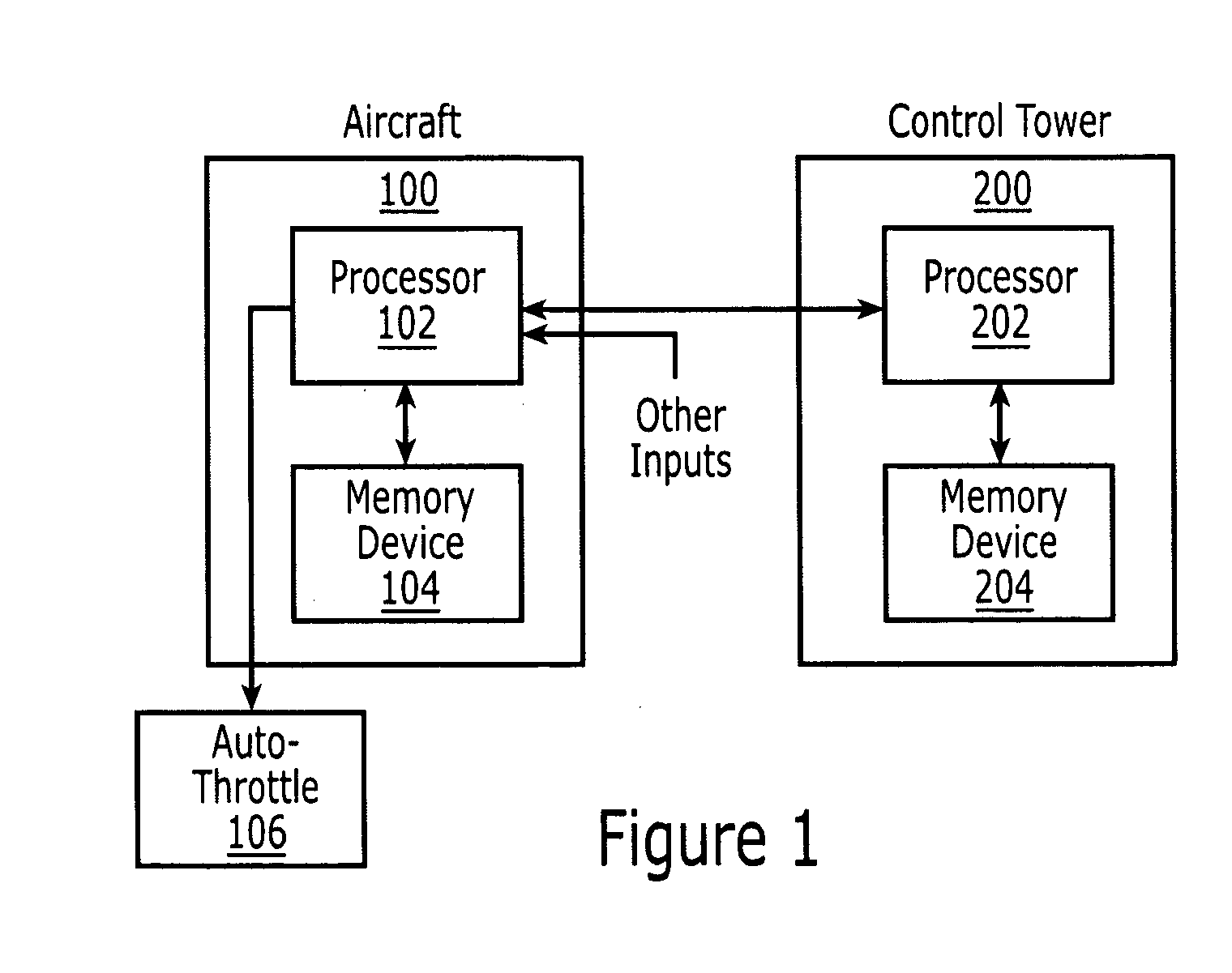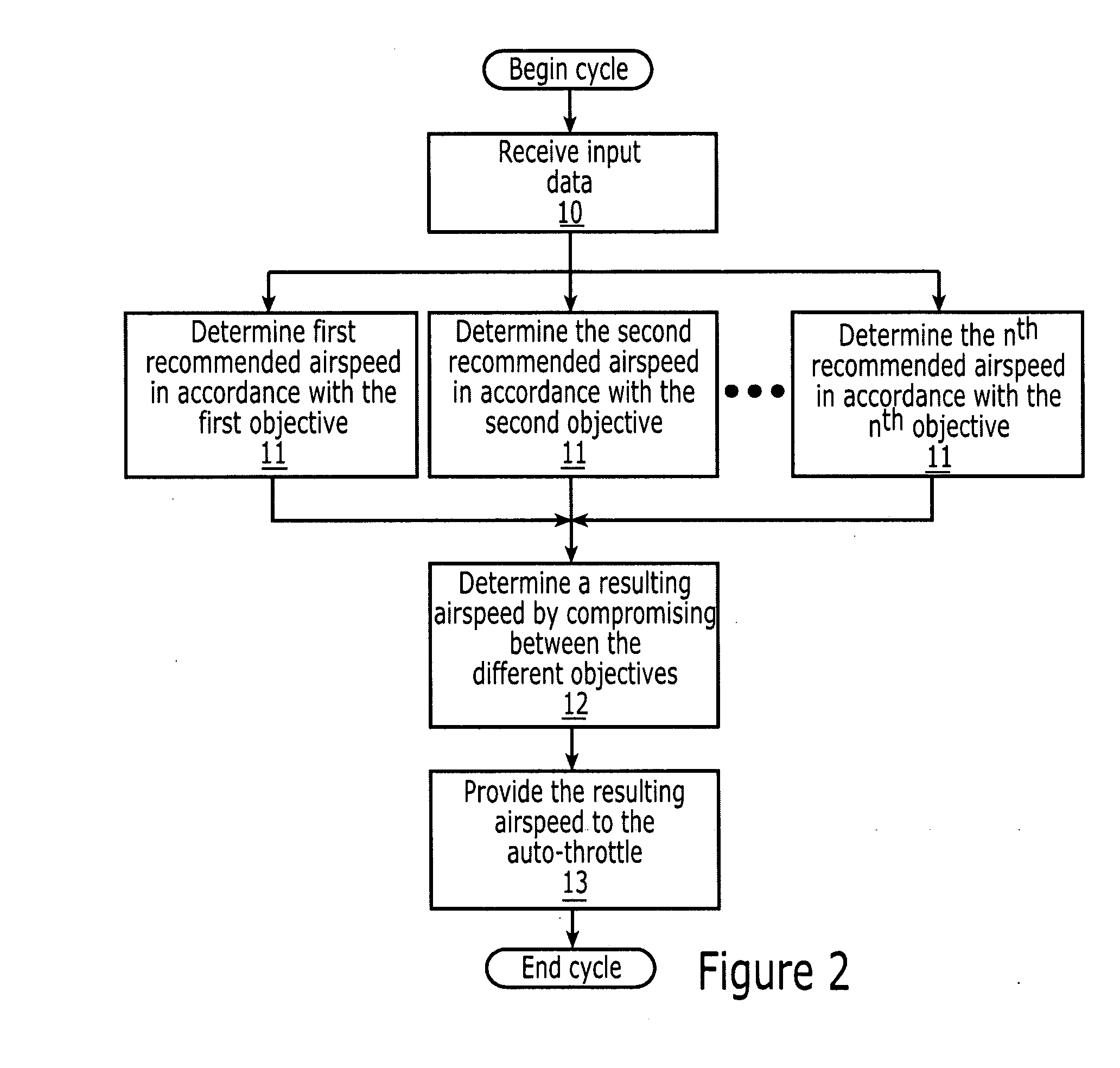System and method for controlling the airspeed of an aircraft
a technology of airspeed and control system, applied in the direction of instruments, navigation instruments, energy saving arrangements, etc., can solve the problems of passengers missing connecting flights, arriving late at the final destination, and many problems, and achieve the effect of facilitating on-time arrival
- Summary
- Abstract
- Description
- Claims
- Application Information
AI Technical Summary
Benefits of technology
Problems solved by technology
Method used
Image
Examples
Embodiment Construction
[0026] The present invention now will be described more fully hereinafter with reference to the accompanying drawings, in which some, but not all embodiments of the inventions are shown. Indeed, these inventions may be embodied in many different forms and should not be construed as limited to the embodiments set forth herein. Rather, these embodiments are provided so that this disclosure will satisfy applicable legal requirements. Like numbers refer to like elements throughout.
[0027] A system and method are provided according to various embodiments of the present invention for controlling the airspeed of an aircraft, such as to facilitate the on-time arrival of the aircraft. Embodiments of the present invention could be implemented as a computing device operating under control of software (or some combination of software and hardware) to provide input or otherwise control the auto-throttle (i.e., the portion of the aircraft's auto-pilot that controls the speed of the aircraft). As ...
PUM
 Login to View More
Login to View More Abstract
Description
Claims
Application Information
 Login to View More
Login to View More - R&D
- Intellectual Property
- Life Sciences
- Materials
- Tech Scout
- Unparalleled Data Quality
- Higher Quality Content
- 60% Fewer Hallucinations
Browse by: Latest US Patents, China's latest patents, Technical Efficacy Thesaurus, Application Domain, Technology Topic, Popular Technical Reports.
© 2025 PatSnap. All rights reserved.Legal|Privacy policy|Modern Slavery Act Transparency Statement|Sitemap|About US| Contact US: help@patsnap.com



